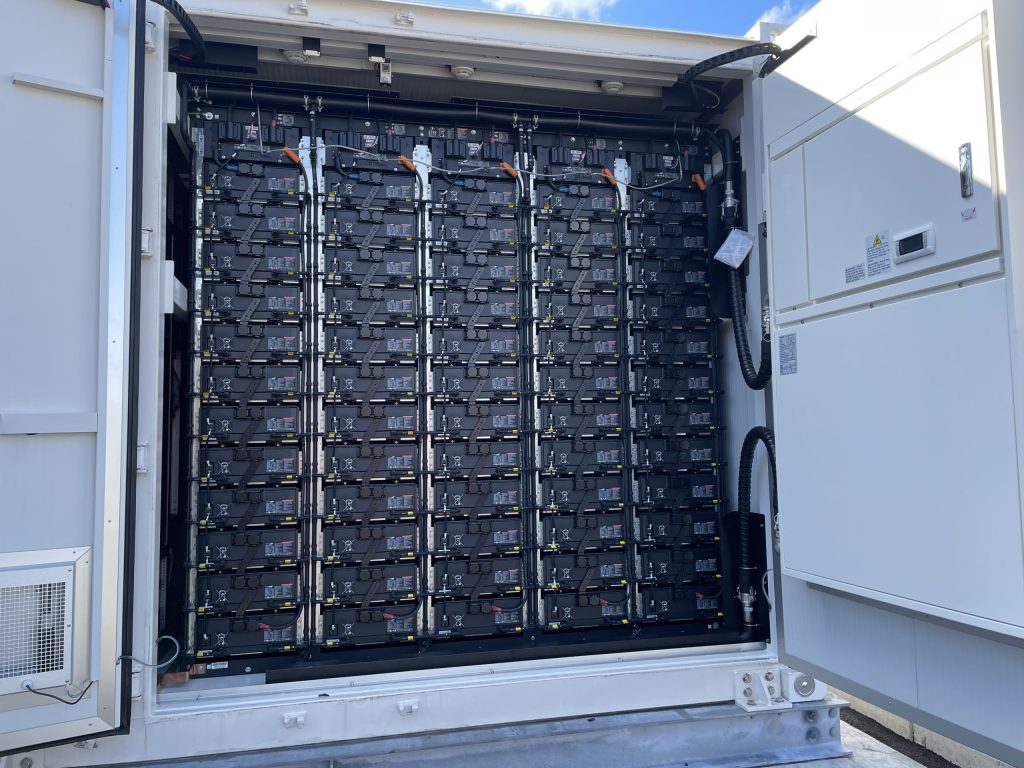
WELLESLEY UNVEILED a battery storage facility on Thursday that is expected to save town residents an estimated $8 million a year on their electric bills.
The facility consists of six, 20-foot containers filled to the brim with lithium ion batteries that will be used to manage the town’s electricity demand and supply. The batteries will charge up during overnight hours when the price of electricity is generally low and then discharge their power into the town’s electric grid during peak demand periods, typically from 4 p.m. to 9 p.m., when electricity prices are high.
By reducing the Wellesley Municipal Light Department’s purchases during peak demand periods, the battery will generate savings on energy, transmission, and other costs assessed by the New England grid operator. Those savings will be split between the town and the battery owner, Citizens Energy Corp.
Joe Kennedy III, the president of Citizens Energy, called the 4.99 megawatt system – capable of delivering 20 megawatt hours of energy – one of the largest municipal battery storage installations in the region.
“There’s no doubt that we must continue to build out the renewable sector to meet our country’s growing energy needs,” Kennedy said at a press conference in Wellesley. “As we integrate more renewable energy into our grid, battery energy storage systems provide the necessary balance to manage fluctuations, reduce overreliance on fossil fuels, and improve overall grid sustainability.”
Stephen Bern, director of resiliency at Citizens Energy, pegged the cost of the Wellesley battery at $10 million to $12 million. He said the Wellesley project incurred some additional costs because the site where it’s located required some remedial work.
The Wellesley project is coming online as climate legislation pending on Beacon Hill seeks to expand the business dramatically in Massachusetts by calling for utilities to enter into “cost-effective contracts” for 5,000 megawatts of storage by July 31, 2030.
Most batteries, including the one in Wellesley, discharge their power in a short period, typically three to four hours. But the climate legislation seeks to promote batteries that can discharge power over much longer periods – mid-duration, which is 4 to 10 hours; long duration, which is 10 to 24 hours; and multi-day duration, anything over 24 hours. The longer the duration of a battery the better it can help manage energy supply and demand.
The post Wellesley battery expected to save town residents $8m a year appeared first on CommonWealth Beacon.

